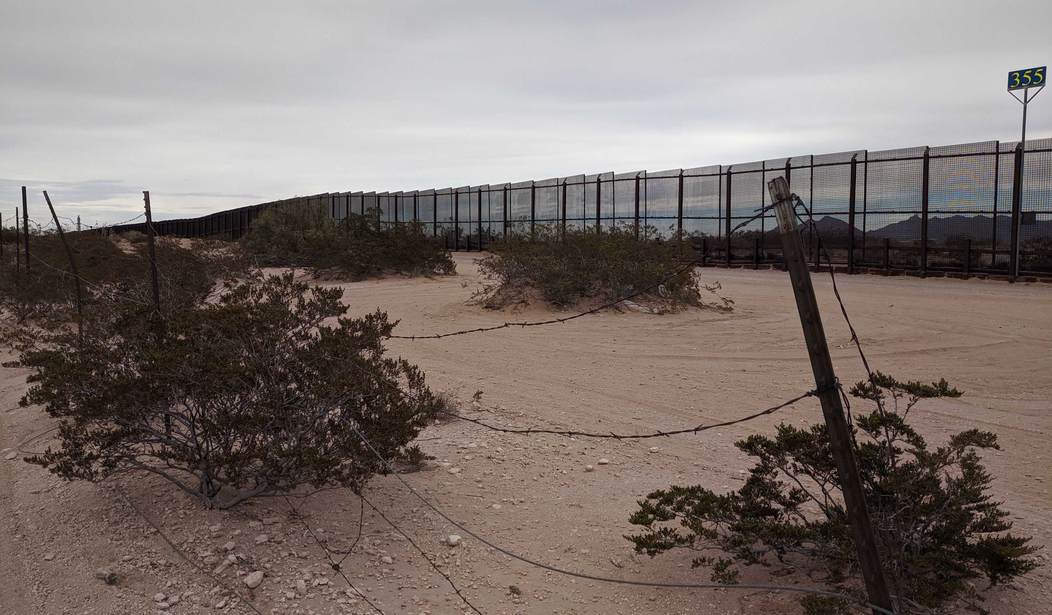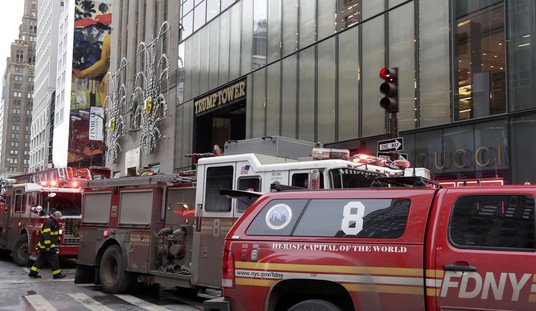EL PASO, Texas — It is almost one year since the large migrant caravans that formed in Central America started to reach the borders of the United States. On a tour in the El Paso Sector (EPS) with U.S. Customs and Border Protection (CBP), agents told Townhall they are better prepared if they encounter a similar situation.
Prior to November 2018, the EPS, which comprises 268 miles of the southwest border, was not nearly as busy compared to the other sectors. That all changed when the caravans reached border patrol's area of responsibility.
CBP spokesman Fidel Baca told Townhall that up until the caravans arrived, agents were mainly concerned with illegal crossings from people who wanted to avoid detection. The people in the caravans did the exact opposite.
"These people were walking up to agents and turning themselves in," Baca recalled. That presented a problem as it pulled manpower away from patrolling the border to processing all of those who presented themselves to claim asylum.
"And we still had those people not wanting to be caught. So here we are in one area with our hands full and then out this side, here's somebody coming across," Baca continued. "Did we have getaways? Yes, we did. Did we have a lot [of getaways]? Yes, we did."
Recommended
In fiscal year (FY) 2018, the EPS had a total of 31,646 apprehensions. In FY 2019, the year of the caravans, the number spiked to 182,244 apprehensions. For FY 2020, EPS has had a total of 5,244 apprehensions up to the end of October.
"At the peak here in [the EPS], we were averaging about 1,500 people a day...now we're averaging 200 people," Baca said.
Because CBP does not have facilities to hold people long-term, that falls under U.S. Immigration and Customs Enforcement responsibility, it can't provide the large amounts of people with food as it does not have the staff or even the kitchen facilities to prepare the food.
"So now we have catering. There's a government contract for catering, which brings three meals a day. Two of them have to be hot. The one that is cold can be, for example, a sandwich," Baca said, adding "unlimited snacks" are provided, whereas before there was only frozen burritos and hot pockets for around 20 people at any given time.
Border patrol's EPS also now has better medical care capabilities to take care of larger groups of people.
When it comes to deterring and stopping illegal border crossings, many of the barriers that make up the EPS are tall, thick, chicken wire-like fences that were installed with the passage of the Secure Fence Act of 2006. Unlike the San Diego Sector, where there is primary and secondary fencing, the EPS has only one fence in the areas that directly border Tijuana. In the areas that do have secondary fencing, there are new steel, concrete, and rebar bollards that were completed in 2017.
Because of the terrain, the bollards cannot extend to cover all areas that directly border Tijuana. To compensate for this problem, in addition to U.S. agents on America's side, Mexican police officers and the recently formed Mexican National Guard patrol just across the Rio Grande River.

(The end of the new steel bollards fencing with Tijuana directly across the Rio Grande River. Not pictured is the chicken-wire fencing that extends beyond where the bollards end.)
Compared to last year, this portion of the border is quieter, but even then, agents still get their fair share of people presenting themselves for asylum, smugglers, and illegal border crossers. Less than 30 minutes after Townhall was shown part of a singular fence in New Mexico, border agents reported two people had climbed over from Mexico in that same area, had "hit pavement" in the U.S., and were now on the run.
The timing of their crossing was no accident: CBP agents were in the middle of their shift change.

(Circled: One of the footprints belonging to one of the illegal border crossers. The single fence they had climbed over that separates the U.S. from Mexico is in the background.)
Including the three CBP officials who were with the author of this article, around five other CBP agents responded and were trying to locate the pair that had disappeared in a rundown trailer park only a few hundred yards from the border.
The agents found their footprints in the sand, but the border crossers were nowhere to be found. Analyzing the footprints, one CBP agent said it appeared they hid under a trailer home and waited for a truck to pick them up before authorities were able to respond in time. In the area where the border crossers had climbed over, a couple of Mexican National Guardsmen stood nearby.

























